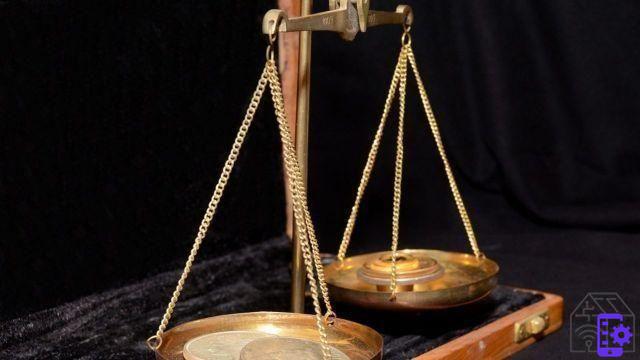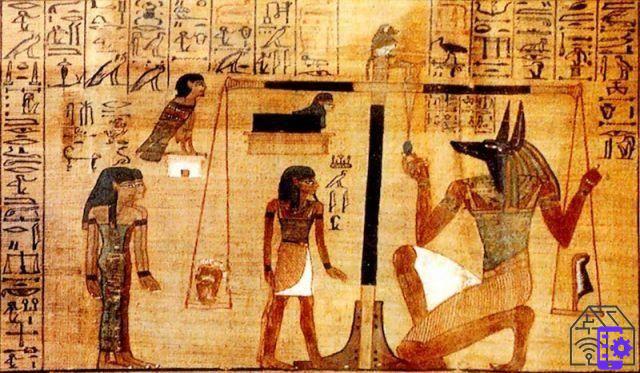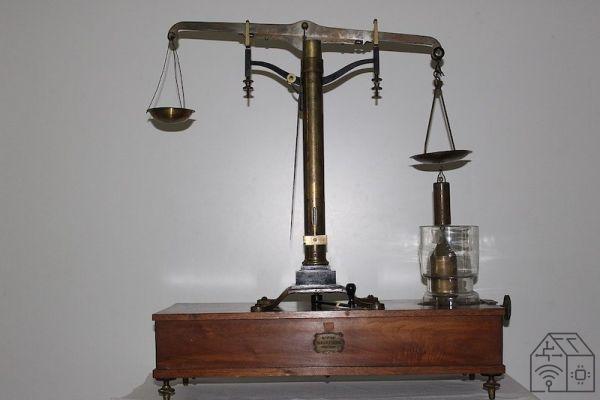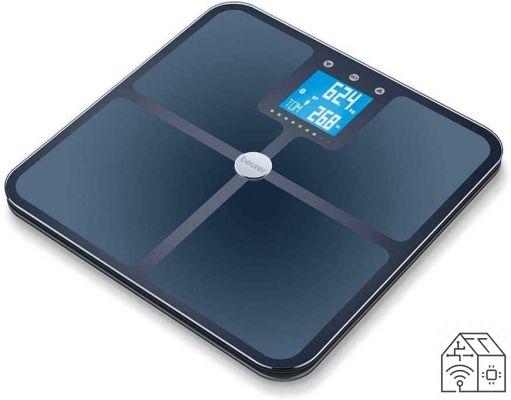
How has the scale changed?
How has an instrument as simple as it is important in any society evolved (and diversified) in history? And to start, what is a scale?
What is the scale
Before discovering how the balance has evolved, let's try to define it.
And as often happens with everyday objects, using the precise words is less simple than one would have expected.
The balance is the instrument that you use to measure the mass of an object (or, agreed, of a person or other living being).
And here we are already faced with a surprise. We should in fact speak of mass and not of weight. Because the weight, to be rigorous, is the force produced by the mass in a given gravitational field. Mass, on the other hand, is not affected by the force of gravity.
Origins (and importance) of the balance
It is not difficult to think of the balance as a representative object of the evolution of humanity. Weighing, how to measure, are symptoms of a culture that denotes a system of relationships between different groups of individuals.
Thus a primitive civilization is abandoned with the balance, in which each small family community uses the available resources until exhaustion and then moves. A more advanced culture takes over, with exchange needs that are impossible to satisfy by bartering alone.
But when was the balance born?
Babylon and Assyria are believed to be the cradle of the oldest system of measurement, as reported in their inscriptions, i.e. in the cuneiform script, which can be traced back around 3.000 BC.
Two headless statues of the Sumerian king Gudea of that time have been found, now preserved in the Louvre Museum, which were used as weights.

The symbolic function of the balance: psychostasia
The symbolic attraction of the balance is very strong, today a symbol of justice. But the ancient Egyptians had already introduced the concept of psychostasis, as we find depicted in various Egyptian pictorial testimonies. It is about the weighing of the soul: Anubis, the god of the dead, decided the access of the dead to the afterlife by weighing their soul on one plate and a feather on the other.
The first evolutions of the balance
The most ancient scales, with equal arms, were formed by a free swinging rod with two plates hanging at the ends.
The Babylonians introduced an important novelty: to the comparison between the weight of two objects they added the comparison of the specific weight of an object with some samples used for a standard reference, initially represented by a series of stones of different sizes.

La stadera
To find out how the balance has changed with Roman times, we must introduce the concept of steelyard, of Campania origin: an arm with a sliding weight (called “Roman”) at the end of which there is a plate on which to place the object to be weighed. You know the scales for weighing patients in some medical offices? It is none other than the evolution of the steelyard. Which in the ancient Roman and Etruscan world was very lucky in the markets, thanks to its easy portability.
How the balance has changed: trade
Fundamental instrument for trade, the balance will begin to refine from the seventeenth century. For example, by using a knife-blade surface, the contact area and therefore the friction force on the fulcrum were greatly reduced, to the advantage of measurement accuracy.
The introduction of precision balances for precious metals and those for pharmaceutical use begins.
In the early years of the nineteenth century in France and England they reasoned about the need to accurately establish the rates of postal shipments according to their weight. The letter scales, characterized by extreme sensitivity.
In the meantime, the metric system, developed by a commission chaired by Lagrange in 1791, begins to spread throughout Europe, including Italy.

The dynamometer
In 1874, the German physicist and mathematician Philipp von Jolly invented the dynamometer, the use of which is based on a spring with an elastic constant, necessary to measure the weight force of the object hooked, according to the elongation of the spring itself.
The balance in the twentieth century
The scale has undergone a further and important evolution starting from the XNUMXs, when the mechanical models began to be joined by digital ones.. Nowadays digital scales are used in almost all areas: for weighing people and food, as well as for extremely precise weighing, for example in jewelery.
 FitTrack Dara BMI Smart Digital Bathroom Scale -...
FitTrack Dara BMI Smart Digital Bathroom Scale -...
- 17 DIFFERENT BODY MEASUREMENTS - FitTrack's Dual BIA technology uses two different frequencies to perform with ...
- UP TO 8 USERS PER DEVICE - FitTrack recognizes users and records the data of up to 8 different people, ...
- INTEGRATED APP FOR iOS AND ANDROID - FitTrack Health saves the measurements on your smartphone. Track the progress of your ...
The smart balance sheet
How the balance has changed in recent times is there for all to see. Now every object of daily use that somehow concerns the psychophysical sphere of the individual can be connected to the smartphone and provide not only real-time data but also projections and suggestions for the future.
The same for scales. In their smart version they are able to calculate, for example, the body mass index, the percentage ratio between fat and muscle, the basal metabolic rate or the number of calories to be consumed daily..
There is no shortage of intelligent scales with additional functions, perhaps ad hoc for sportsmen or for pregnant women. All, strictly, with their own app to download.




















![[Review] Samsung Powerbot VR7000: the robot vacuum cleaner from Star Wars](/images/posts/6bc44de38605b5c0fa12661febb1f8af-0.jpg)





